Detailed introduction of Technical University of Madrid:
Introduction and Overview
Geographical location: Located in Madrid, the capital of Spain, it has four campuses, namely Ciudad Universitaria, Madrid Ciudad, Campus Sur and Campus de Montegancedo.
Student and Faculty Size: Currently, there are about 39,000 undergraduate students and about 6,000 graduate students, more than 3,000 faculty members and more than 2,000 administrative and logistical staff.
History and Establishment Time
The Technical University of Madrid was founded in 1971 and was formed by the merger of several engineering and architecture schools. Its history can be traced back to the 17th century. Some colleges have a long history. For example, the oldest School of Architecture and Design was founded in 1752, the School of Marine Architecture and Engineering was founded in 1772, and the School of Mining and Engineering was founded in 1777. In the past 150 years, a considerable part of the history of Spanish architecture and engineering was written by various colleges that were the predecessors of the Polytechnic University of Madrid.
School Strength
Teaching Quality: As the largest and oldest professional polytechnic university in Spain, it provides a wide range of professional education at the junior college, undergraduate, master and doctoral levels, covering agricultural engineering, food science and technology, civil engineering, mineral engineering, geological engineering, sports science, innovation management and economics.
Faculty: With strong faculty, almost all of Spain's top science and engineering teachers and researchers come from this school, or have been its students, or have been its faculty, or both.
Research Strength: With sufficient research funding, 100 million euros of the annual 360 million euros of research funding comes from abroad. It is the university in Spain that receives the most European Community R&D funds, and has received nearly 15% of the R&D projects in the fund.
Institutional Nature
Public University.
Educational Philosophy
Focus on the combination of theory and practice, and emphasize the cultivation of students' innovative and practical abilities to meet the society's demand for science and engineering professionals. At the same time, the school adheres to the educational philosophy of diversity and internationalization, breaks down the barriers of countries and nationalities, provides students with an open and inclusive learning environment, and promotes exchanges and cooperation between students from different cultural backgrounds.
Key laboratories and disciplines
Key disciplines: Architecture, civil engineering, machinery, aerospace, energy and other engineering majors are at the top level in Spain and Europe, and are also well-known around the world. In the 2023 QS World University Rankings by Subject, its architecture major ranks 26th in the world, civil engineering ranks 35th, mechanical engineering ranks 70th, mineral engineering ranks 38th, electrical and electronic engineering ranks 80th, and computer science and information systems engineering ranks 125th.
Key laboratories: The school has a number of advanced scientific research laboratories and research centers, such as the Artificial Intelligence Laboratory opened by the Department of Artificial Intelligence (DIA), which provides strong support for scientific research and teaching in related fields.
Department Settings
The Polytechnic University of Madrid is composed of 21 colleges in the style of French higher business schools, of which 12 colleges are higher technical colleges with a school system of 8 years or 5-6 years; the other colleges are technical colleges with a school system of 3 years, which is now unified as 4 years for undergraduates and 1-2 years for masters. The school has two departments, the Department of Informatics and the Department of Sports Science, as well as 18 colleges including the Higher School of Architecture, the Higher School of Aviation, the Higher School of Agricultural Technology, the Higher School of Civil Engineering, and one research institute - the Institute of Educational Sciences.
Ranking
QS World University Rankings: 349th in the 2024 QS World University Rankings.
2021 QS World Engineering and Technology School Rankings: 75th in the world.
2023 QS World Engineering and Technology Rankings: 55th in the world.
Times THE2019 Ranking: 601-800.
Expenses
Tuition fees: Tuition fees vary for different majors, such as 5,044 euros/year for master's programs in biomedical engineering, computational biology, data science, etc., and 5,040 euros/year for master's programs in signal theory and communication.
Living expenses: There are various forms of accommodation, and the cost of student apartments is between 250-450 euros per month. Euro.
Campus Environment
Campus Distribution: The four campuses are located in different areas of Madrid, each with its own characteristics. The main campus is located in the largest university city in Europe, close to the famous Plaza de España in Madrid, and adjacent to the Complutense University of Madrid.
Facilities and Atmosphere: Most of the buildings on campus are of different styles, with modern, postmodern and traditional styles intertwined, full of artistic atmosphere. The school has complete teaching facilities and living facilities, including laboratories, libraries, gymnasiums, restaurants, etc., which provide convenience for students' study and life.
-
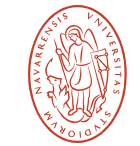
University of Navarra
-
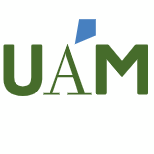
Autonomous University of Madrid
-

Polytechnic University of Catalonia
-

CEU University of San Pablo
-
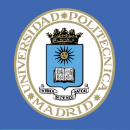
Technical University of Madrid
-

University of Lleida
-
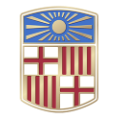
University of Barcelona
-

University of Oviedo
-
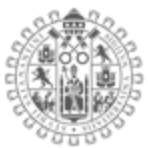
University of Salamanca
-
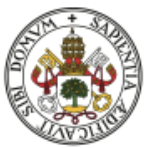
University of Valladolid
-

Mesoamerican University
-

Istmo University
-

Mariano Galvez University of Guatemala
-

Regional University of Guatemala
-

Galileo University
-

Francisco Marroquín University
-

Rafael Landívar University
-

University of the Valley of Guatemala
-

University of San Carlos of Guatemala
-

Technological Institute of Tlaxcala Plateau
-

Golfo University
-

Technological University of South Sonora
-

Technological University of Huejotzingo
-

Tizimín Institute of Technology
-

Chilpancingo Institute of Technology
